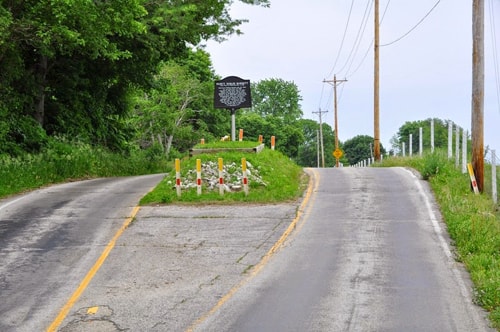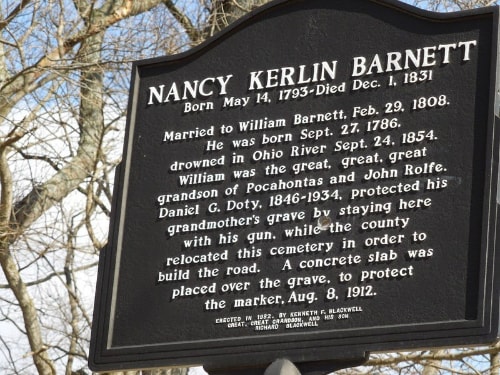Grave in the middle of the asphalt road in America
Near Amity County, Indiana, USA, a small mound of earth splits the asphalt of Route 400 South in two lengthwise. It is the grave of Nancy Kerlin Barnett (1793-1831).
Nancy Kerlin married William Barnett in 1808, at the age of fourteen. They settled near what would become Amity County, Indiana. When she died in 1831 at the age of 38, she was buried atop a small hill overlooking Sugar Creek, a favorite spot of hers. Later, many others were buried there, forming a small cemetery.
 |
| The grave is located in the middle of an asphalt road in the US. Photo: keithinalaska. |
At the turn of the century, Johnson County decided to build a road through the cemetery, which meant the graves would have to be moved. One of Nancy’s sons objected to the removal of her grave. Since other graves had already been moved out of the cemetery, the builders didn’t mind leaving one grave and the road was built around it.
Trouble started later when the government wanted to widen the road. Now the grave would be right in the middle of the road and had to be moved. However, Daniel G. Doty, Nancy's nephew, strongly objected.
As the authorities moved forward with their plans to clear the road, Daniel Doty took his pistol and stayed on his grandmother’s grave. Exactly how long he stayed there is unknown, but his determination was enough to force the County to detour the road around the grave. On August 8, 1912, a stone plaque commemorating the history of the grave was also placed there.
 |
| Stone plaque records the history of the tomb. Photo: keithinalaska. |
The content written on the stone tablet is as follows:
"Nancy Kerlin Barnett, born May 14, 1793 – died December 1, 1831, married William Barnett on February 29, 1808. He was born September 27, 1786, and drowned in the Ohio River on September 24, 1854. William was the fifth-generation descendant of Pocahontas and John Rolfe.
Daniel G. Doty (1846 – 1934) guarded his grandmother’s grave by “posting” there with a gun while the County cleared the cemetery to make way for the road. A concrete slab was placed over the grave to protect it.
Recorded by the author, August 8, 1912.”
According to VnExpress
| RELATED NEWS |
|---|
